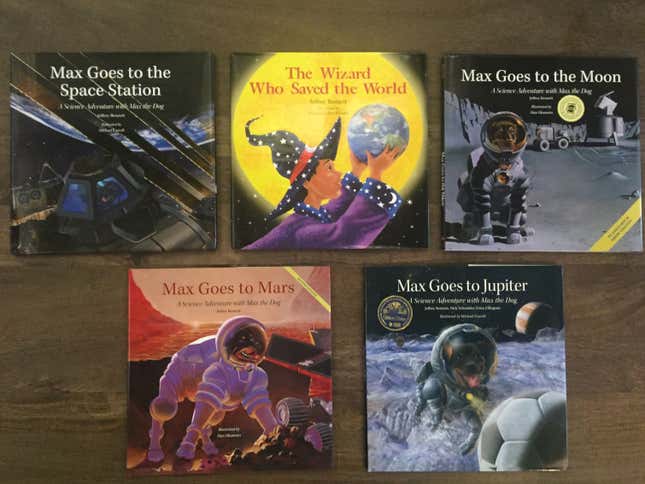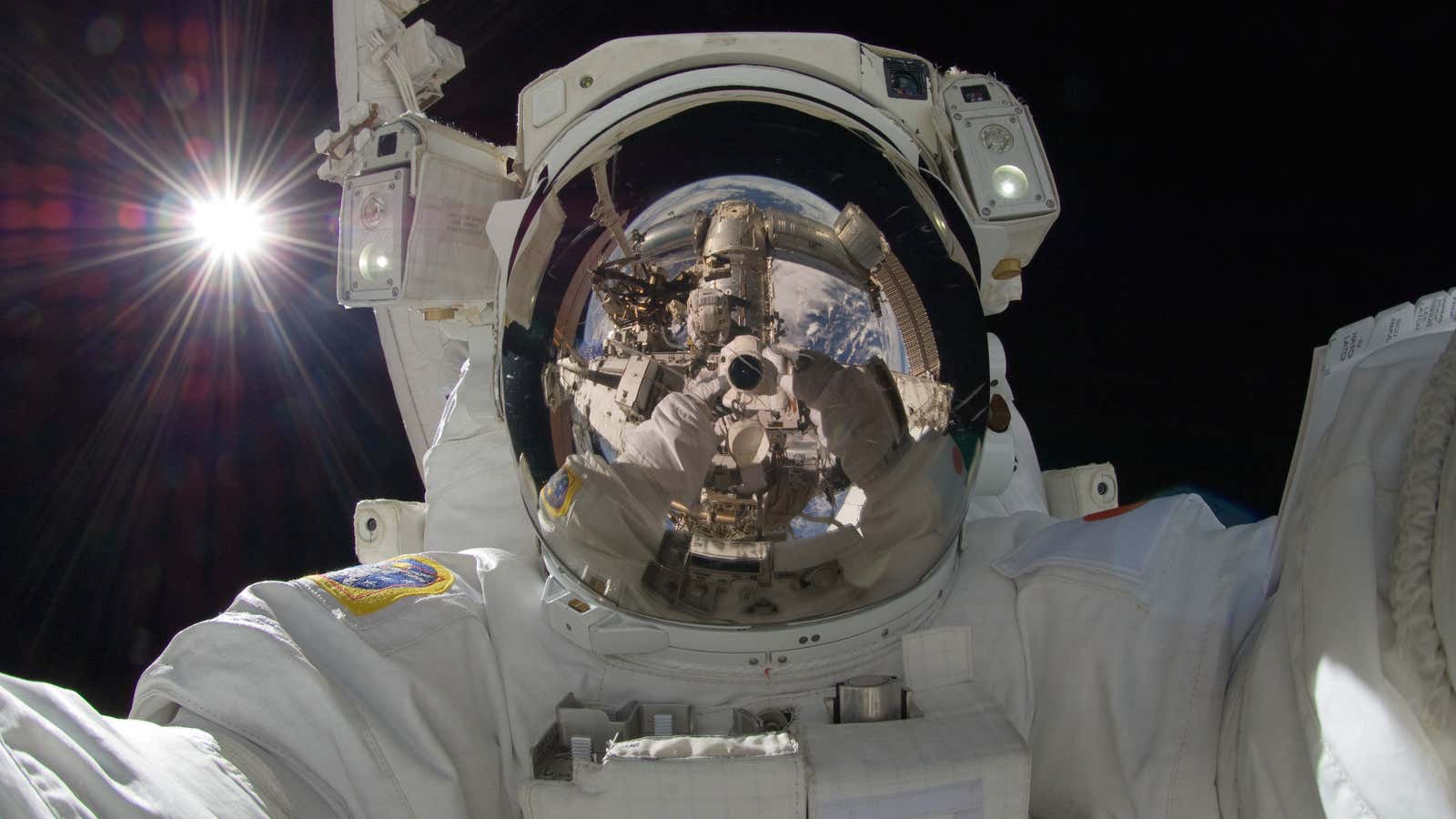In a series of children’s books, a dog named Max goes on adventures in space with NASA astronauts and his owner, Tori. They travel to the moon, to Mars, to Jupiter. In one book they save the International Space Station. Last year, Max actually did go to space—his books were on board the Orbital 1 mission, as part of a cargo load to the International Space Station. Once there, astronauts Koichi Wakata and Mike Hopkins read the stories in front of the Cupola, the observation window that looks out onto Earth. They sent those videos back down to Earth, where they were edited into videos for parents and teachers to show their kids.
For years, those books, replete with sidebars explaining scientific concepts like gravity and light, were sold in Houston’s Space Station under the eye of Patricia Tribe, then the space station’s director of education. Tribe, who is now an early childhood and science education consultant in Canada, has big plans to take the idea further—by recording videos for children of astronauts conducting science experiments in space. Those plans were recently delayed: In June, nine such experiments were destroyed aboard a SpaceX rocket carrying supplies to the International Space Station, which exploded within minutes of take-off. But Tribe and her partner on the project, NASA astronaut Alvin Drew, are busy working to raise the $20,000 needed to rebuild the experiments.
“Our tagline is: ‘What you cannot imagine you cannot do,'” Tribe tells Quartz. “I have had people tell me that kids are just mesmerized by the fact that they can see the astronaut reading the book but they can also see the earth rotating behind him.”
Step 1: Getting the books to space
Tribe came up with the idea to have astronauts read children’s stories from the International Space Station in 2010. She and Drew decided on the Max Goes to the Moon series by author Jeffrey Bennett, an astrophysicist and former college professor and elementary school teacher, as the books that the astronauts would read.
“The story itself is the part that really lured me in,” Drew tells Quartz. “What looks to be like science fiction…all the things he’s doing on board that space station are based on things that are going on right now.”
Tribe and Drew worked with Bennett to get the rights to the book (when they called him, he thought it was a prank) and to have him write another book that’s even more meta, Max Goes to the International Space Station.
They called the program Story Time from Space.

On the space shuttle Discovery’s last mission in 2011, Drew read Max Goes to the Moon off his computer, as a prototype for what the program might look like.
The 2014 videos are more polished, feature the physical books, and the astronauts explain some of the scientific concepts.
Bridging the gap between reading and STEM
Tribe and Drew are currently trying to raise the $20,000 needed to recreate those experiments to send up.
Tribe hopes that combining the books and the science in them will help students learn to love not only reading, but the scientific concepts they can learn about in a work of fiction. “We need to have literate people and we need to have scientifically literate people,” she says.
So Drew and Tribe enlisted retired Canadian astronaut Bjarni Tryggvason, who has extensive experience preparing cargo for space missions and understood the grueling review process and requirements of anything going up to the station, to custom-build the demonstrations.
For a lesson on how light travels, for example, the initial voyage carried a $20,000 spectrometer, a device that breaks light down into its components. The spectrometer was linked to a data system—astronauts would point it toward the sunset and get different readings as the sun goes through the sunset along Earth.
From those readings of the light signatures, the plan is for children to figure out what molecules are in the atmosphere, at what levels. The spectrometer was donated, but they had to develop a special lens to link it to the data system. (The company that donated the spectrometer will donate another one, but many of the other projects have to be redone from scratch.)
“The astronauts have done lots of demonstrations in space before, using stuff that they happen to have up there,” Drew tells Quartz. “This is the first time that someone had build a specific set of demonstrations in order for the astronauts to show particular concepts, and to tie in with lessons from these stories.”
After videotaping the demonstrations and collecting data, the group plans to reach out to educators to provide training and lesson plans based around the activities. Drew expects it will be at least another year before they have the opportunity to send the materials up again, but Tribe says they are trying to rebuild by next month to be prepared.
Videos like these are an important way to get kids interested in science and math, Drew says, because it makes the career real; it shows children that someone like them can do it. When Drew tells adults about his travels in space they see it as an untouchable experience, he says.
Kids are different, Drew says; they think more freely and imaginatively. “They picture themselves on those adventures in space, doing what I’m doing.”
